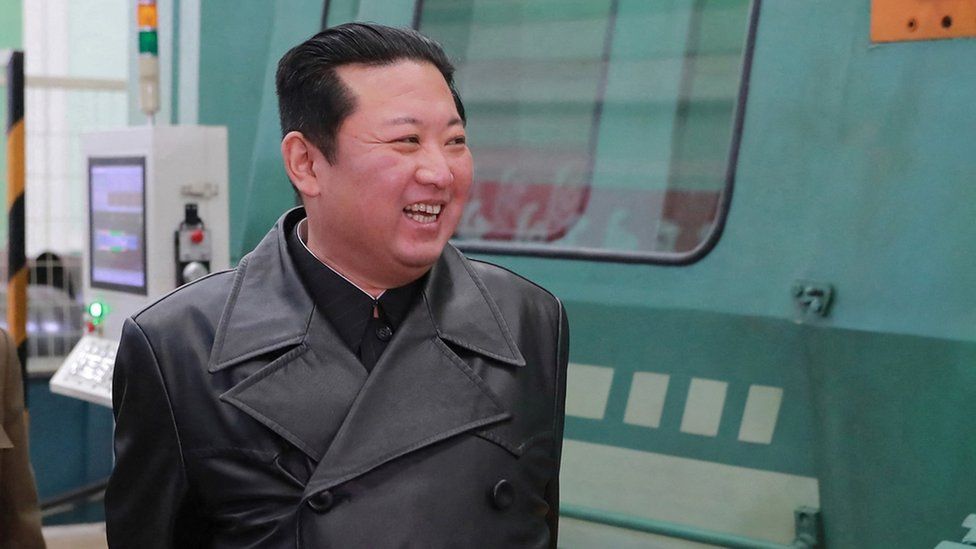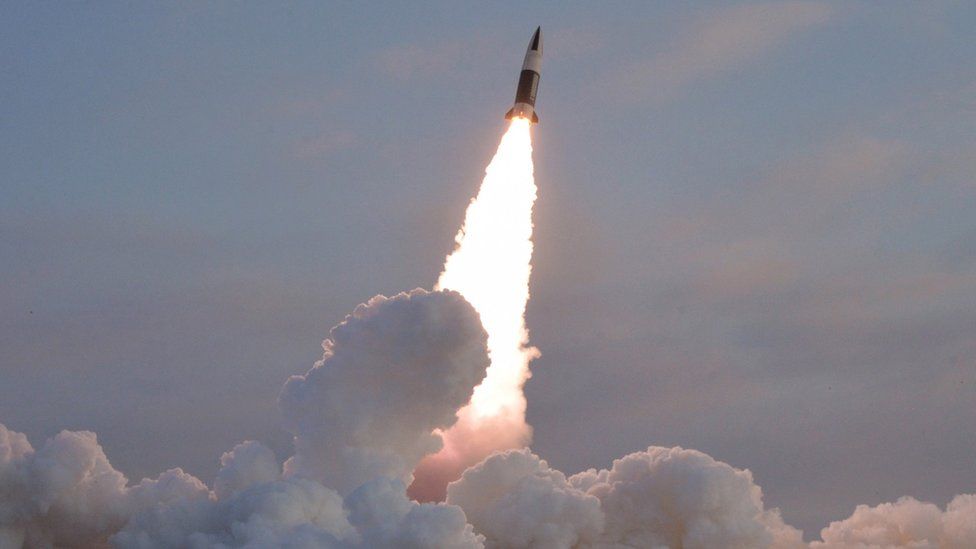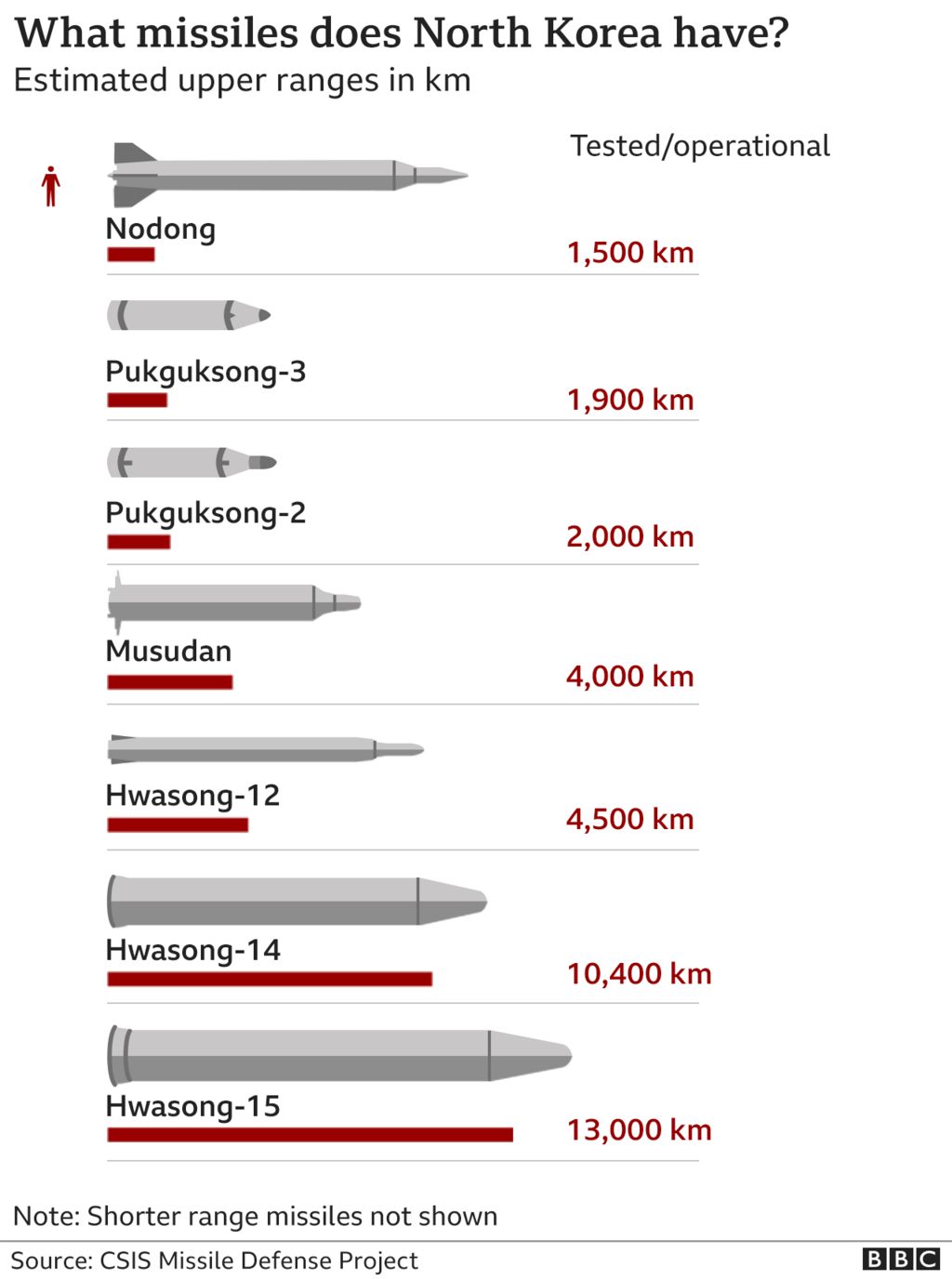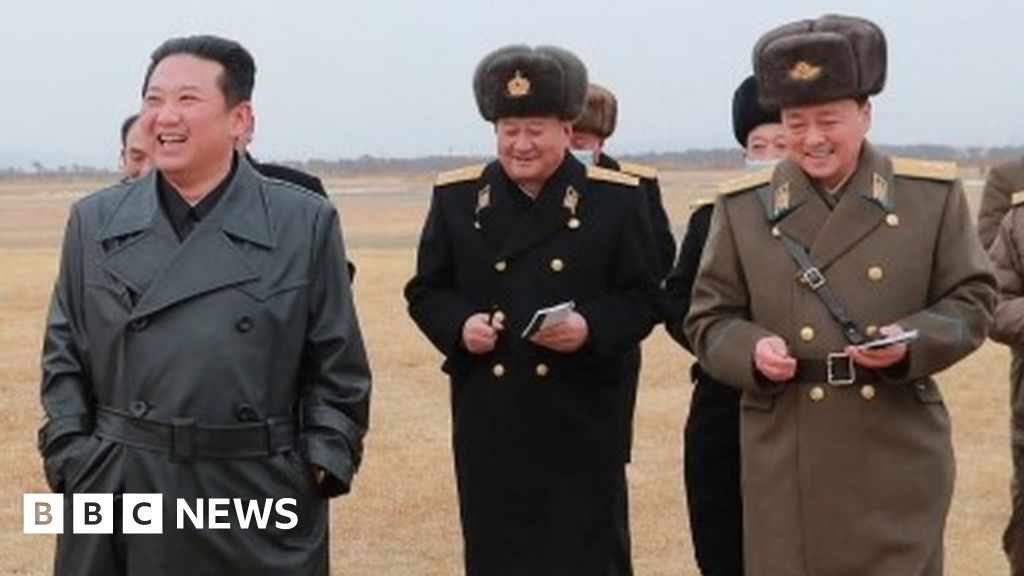
North Korea has conducted what is thought to be its biggest missile launch since 2017.
The weapon was apparently an intermediate range missile which reached an altitude of 2,000km before coming down into the Sea of Japan.
Japan, South Korea and the US have all condemned the launch, the seventh test this month.
The UN prohibits North Korea from ballistic and nuclear weapons tests, and has imposed strict sanctions.
But the East Asian state regularly defies the ban, and leader Kim Jong-un has vowed to bolster his country’s defences.
Experts suggest multiple reasons lie behind the spate of launches, including political signalling of strength to global and regional powers and also the practical need to test out new engineering and military command systems.
The timing is also seen as significant, coming just before the Winter Olympics in China, and ahead of the South Korean presidential election in March.
‘Destabilising acts’
South Korea reported that the launch took place at 07:52 local time on Sunday (22:52 GMT) off North Korea’s east coast.
Japanese and South Korean officials estimated that the missile reached an altitude of 2,000km (1240 miles) and flew for 30 minutes to a distance of 800km (500 miles).
The United States called on North Korea to “refrain from further destabilising acts”.

January was already one of the busiest months on record for North Korea’s missile programme, with several short range missiles fired into the sea.
South Korea’s president, Moon Jae-in, said the latest flurry of tests was reminiscent of the heightened tensions in 2017, when North Korea conducted several nuclear tests and launched its largest missiles, including some that flew over Japan.
According to South Korean news agency Yonhap, the missile appears to be similar to the Hwasong-12 missile that the North tested in 2017.
In 2018, Mr Kim announced a moratorium on testing nuclear weapons or its longest range intercontinental ballistic missiles (ICBMs).
But the North Korean leader said in 2019 he is no longer bound by the moratorium.
The US imposed more sanctions on North Korea earlier in January, in response to previous missile launches. Talks between the two countries have stalled since US President Joe Biden took office.
This video can not be played
To play this video you need to enable JavaScript in your browser.
Dr Daniel Pinkston, a lecturer in international relations, told the BBC there were four main reasons why North Korea tests missiles: for engineering purposes to test new systems; for military exercises; for political signalling to different audiences; and as an advertisement for foreign buyers.
North Korea may be signalling to big powers such as China, the US and the UN Security Council, but also regional foes and also the Korean peninsula, he said.
“There’s a South Korean presidential election coming up in just over a month, so this is consistent with their past behaviour to try and intimidate South Korea and the incoming president,” said Dr Pinkston, from Troy University and who lives in South Korea.
“And then there’s the domestic audience inside North Korea which I think a lot of people underestimate, for that audience inside North Korea this is a way of signalling strength and resolve and the power of the leadership.”
According to other analysts, the missiles tested earlier this month showed North Korea was developing technology that can defeat the costly and complex missile defence systems that America and Japan have been deploying across this region.
Former South Korean naval commander Professor Kim Dong Yup said: “They want to have a deterrence system that is like a scorpion’s tail.”
“North Korea’s main purpose is not to attack but to defend themselves,” says Professor Kim, adding that the country is trying “to secure a diversified deterrent capability”.
Meanwhile, Uk Yang, research fellow at Center for Foreign Policy and National Security told Reuters that “Kim seems to be ramping up tests in bid to pressure both Washington and Beijing over sanctions just ahead of the Olympics”.


